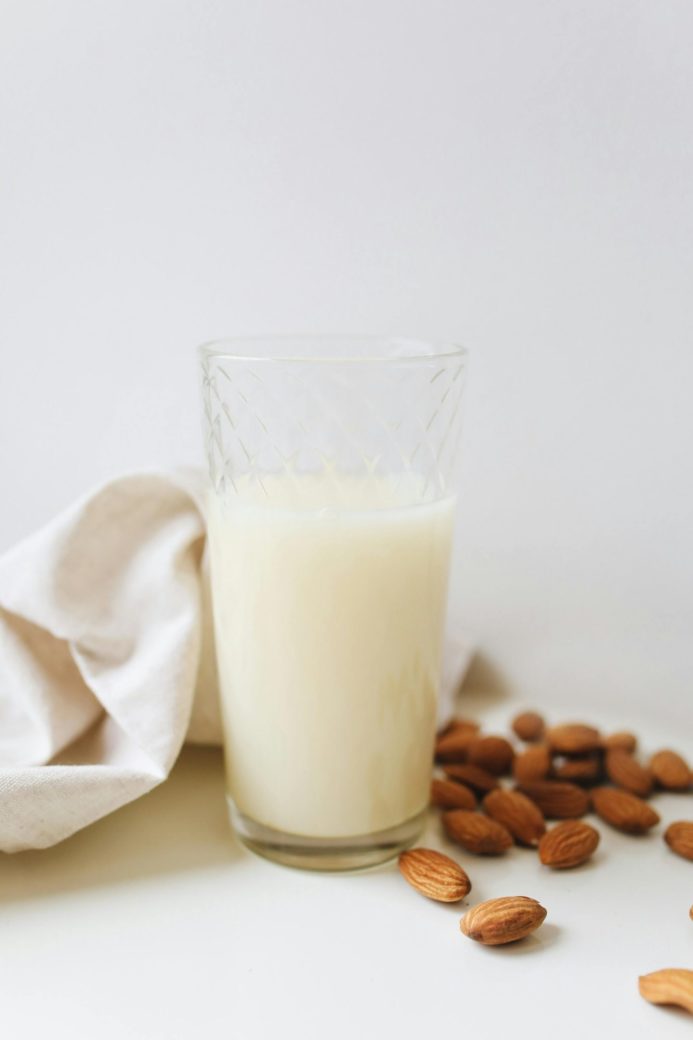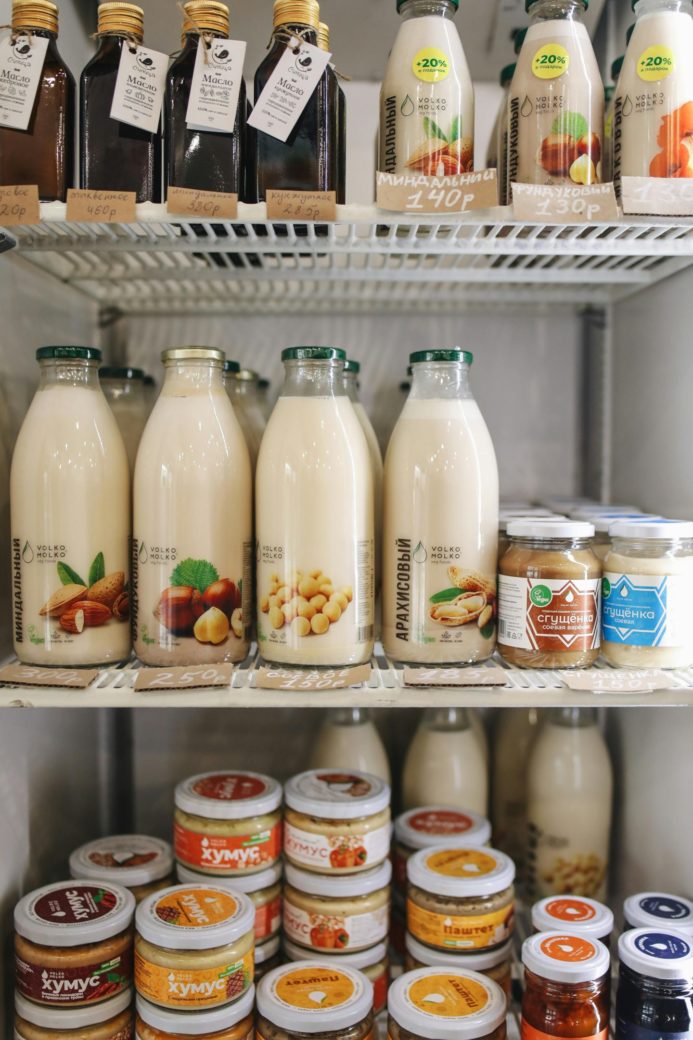Are you tired of missing out on your favorite dairy treats due to lactose intolerance? Worry no more! Lactose-free milk is here to save the day, offering the same creamy goodness without the digestive discomfort. In this comprehensive guide, we will explore everything you need to know about lactose-free milk so that you can enjoy your favorite recipes without any unpleasant symptoms.
Table of Contents
Key Takeaways
Lactose-free milk is an accessible option for those with lactose intolerance, allowing them to enjoy dairy without discomfort.
It offers improved digestion and preserved nutrition while providing a similar taste and texture to regular milk.
Popular alternatives include soy, almond, oat and organic milks. When shopping it’s important to read labels carefully & compare brands based on price vs quality.
Understanding Lactose-Free Milk

Lactose-free milk has become a popular option for those with lactose intolerance, making it possible for them to enjoy the same nutritional benefits as regular milk without the digestive issues. But what exactly is lactose-free milk, and how is it made?
The process of making lactose-free milk involves removing the lactose from regular milk. This is
What is Lactose?
Lactose is a naturally-occurring sugar commonly found in milk and dairy products, such as cheese and yogurt. Our bodies break down lactose with the help of lactase, an enzyme that breaks lactose into glucose and galactose, which are then absorbed into the bloodstream. For most people, this process goes smoothly, allowing them to enjoy a good glass of milk without any issues.
However, for those with lactose intolerance, the lack of lactase production in their small intestine makes it difficult to break down lactose, leading to digestive issues such as bloating, gas, and diarrhea. Lactose-free milk provides a solution, enabling lactose intolerant individuals to relish dairy foods without discomfort.
Lactose Intolerance: Causes and Symptoms
Lactose intolerance is caused by a deficiency in lactase, the enzyme responsible for breaking down lactose in our bodies. This deficiency can either be inherited (primary lactase deficiency) or result from lactose malabsorption, a contributing factor to lactose intolerance.
When someone with lactose intolerance consumes dairy products containing lactose, their body cannot properly digest the sugar, leading to symptoms such as:
bloating
gas
stomach cramps
diarrhea
These unpleasant symptoms drive many people with lactose intolerance to seek out lactose-free alternatives.
How Lactose-Free Milk is Made
The creation of lactose-free milk involves a unique process, either introducing an external lactase source to breakdown lactose or using filtration techniques to extract lactose from the milk. This results in a milk product that is suitable for those who cannot digest lactose, allowing them to enjoy lactose-free milk without any digestive discomfort.
Popular lactose-free milk brands, such as Lactaid, Fairlife, and Organic Valley, offer various options, including organic lactose free whole milk, 2% milk, and even chocolate milk, ensuring that there is a lactose-free milk option for everyone’s taste preferences. With a growing demand for lactose free products, these brands continue to expand their offerings.
The Benefits of Lactose-Free Milk
For those with lactose intolerance, lactose-free milk offers numerous advantages such as better digestion, preserved nutritional value, and a taste and texture akin to regular milk.
Improved Digestion
For those with lactose intolerance, one of the main advantages of lactose-free milk is better digestion. By providing lactase, the enzyme needed to break down lactose, lactose-free milk helps minimize gastrointestinal symptoms such as bloating, gas, and diarrhea.
This means that those with lactose intolerance can enjoy a glass of lactose-free milk or use it in their favorite recipes without the fear of experiencing any unpleasant symptoms, significantly improving their quality of life and expanding their dietary options.
Nutritional Value
Lactose-free milk preserves the nutritional value of regular milk, encompassing essential vitamins and minerals like calcium, protein, and B vitamins. Therefore, individuals with lactose intolerance can still obtain the benefits of consuming dairy products without experiencing the digestive discomfort associated with lactose.
Furthermore, some lactose-free milk brands, like Fairlife YUP!, are fortified with additional vitamins like vitamin D, vitamin A, and vitamin E, providing even more nutritional benefits to consumers.
Taste and Texture
With a taste and texture akin to regular milk, lactose-free milk offers a fitting alternative for those with lactose intolerance. Some people may find lactose-free milk to be slightly sweeter due to the breakdown of lactose into its two simple sugars, glucose and galactose, but this difference is generally minimal and does not significantly affect the overall taste of the milk. Available in various sizes, including half gallon, it’s easy to find the perfect amount to suit your needs.
The creamy texture of lactose-free milk is also comparable to that of regular milk, allowing those with lactose intolerance to enjoy the familiar mouthfeel of dairy without any unpleasant symptoms.
Popular Lactose-Free Milk Alternatives

Several non-dairy lactose-free milk alternatives, each offering unique benefits and flavours, are available for those who prefer them over regular cow’s milk. These include soy milk, almond milk, and oat milk, as well as organic milk for those seeking a lactose-free option.
Soy milk is a great source of protein and is low in fat. It is also
Soy Milk
Soy milk is a popular lactose-free alternative made from soybeans, offering a similar protein content to cow’s milk. It is a versatile option that can be used in a variety of recipes, from coffee and cereal to baking and cooking.
However, be aware that soy milk can trigger severe allergic reactions in some individuals. Thus, it’s important to know of any existing allergies before adding soy milk to your diet.
Almond Milk
Almond milk is another lactose-free option, made from almonds and offering a slightly sweet and nutty flavor. It is a low-calorie and low-carbohydrate option, rich in vitamin E, calcium, and healthy fats.
Like soy milk, almond milk can also cause allergic reactions, particularly in individuals with nut allergies. Hence, verifying any existing allergies before opting for almond milk as a lactose-free alternative is essential.
Oat Milk
Oat milk is:
A creamy lactose-free alternative made from oats
Has a mild and slightly sweet taste
A good source of vitamin B
High in dietary fiber
May be beneficial for cholesterol levels and heart disease risk.
However, oat milk may contain a protein called avenin, which could potentially cause allergic reactions in some people. Therefore, individuals with known allergies to such ingredients should exercise caution and consult with a healthcare professional before consuming oat milk.
Cooking and Baking with Lactose-Free Milk

As a substitute for regular milk, lactose-free milk can be used in cooking and baking. Depending on the specific type of lactose-free milk used, some recipes may need adjustments for optimal results.
For example, almond milk may require more thickening agents than cow’s milk, while coconut milk
Substituting Lactose-Free Milk
Substituting lactose-free milk in recipes is generally straightforward, but it’s important to consider the specific type of milk alternative being used. For example, soy milk and almond milk may have different tastes and textures, which could affect the final outcome of a recipe.
While using lactose-free milk as a substitute in recipes, keep in mind that the milk sugars are separated, which may cause it to react slightly differently in certain recipes. However, lactose-free milk should not significantly impact the texture or flavor of baked products, making it an appropriate substitute in most recipes.
Baking with Lactose-Free Milk
Baking with lactose-free milk may require some adjustments to the recipe, such as using less sugar or adding a thickening agent. However, these adjustments are typically minimal and do not significantly affect the outcome of the baked goods.
Lactose-free milk can be used as a direct replacement for regular milk in any baking recipe without compromising the taste or texture of the final product.
Savory Recipes
Savory recipes can also be adapted to use lactose-free milk, providing a creamy texture without the lactose. Popular savory recipes that utilize milk, such as soups, sauces, and casseroles, can be easily modified to incorporate lactose-free milk, allowing those with lactose intolerance to enjoy a wider variety of dishes without any digestive discomfort.
No modifications are necessary when substituting lactose-free milk for regular milk in savory recipes, as the taste and texture of lactose-free milk are similar to that of regular milk.
Shopping Tips for Lactose-Free Milk
When buying lactose-free milk, it’s essential to scrutinise labels, compare different brands, and weigh the balance between price and quality.
Reading Labels
Label reading aids in identifying lactose-free milk options and verifying their compatibility with your dietary needs. Look for terms such as ‘Lactose-Free’, ‘Dairy-Free’, or ‘Reduced Lactose’ on the packaging, and review the ingredients list to ensure that there are no dairy or lactose-containing ingredients.
It’s also important to check allergen labels to confirm the absence of dairy or lactose, as well as to look for any additional allergens or ingredients that may be of concern, such as soy or nuts.
Comparing Brands
By comparing different lactose-free milk brands, you can identify the best option that matches your taste preferences and fits within your budget. Popular lactose-free milk brands include:
Lactaid
Fairlife
Organic Valley
Horizon Organic
Clover Sonoma
Each brand offers different options and flavors to cater to individual preferences.
When comparing brands, consider factors such as taste, texture, nutritional content, and any additional benefits, such as organic or hormone-free ingredients, to help you make an informed decision.
Price vs. Quality
When selecting a lactose-free milk, weigh the balance between price and quality. While some options may be pricier, they may offer extra benefits, like organic or hormone-free ingredients. While lactose-free milk is generally more expensive than traditional dairy milk, the additional processing necessary to remove the lactose is often the reason for the higher price.
By comparing different brands and considering factors such as:
taste
texture
nutritional content
any additional benefits
you can make an informed decision that best suits your needs and budget.
Learn more, visit Lactose intolerance: Shopping tips for lactose-intolerant people.
Summary
In conclusion, lactose-free milk offers a fantastic alternative for those with lactose intolerance, providing the same nutritional benefits as regular milk without the digestive discomfort. With various lactose-free milk options and non-dairy alternatives available, everyone can enjoy their favorite dairy treats without any unpleasant symptoms. Remember to read labels, compare brands, and consider the balance between price and quality when shopping for lactose-free milk, and enjoy the creamy goodness without any worries.
Frequently Asked Questions
Is lactose-free milk better for you?
Lactose-free milk is just as nutritious as regular milk, providing a range of vitamins and minerals including calcium, vitamin A, D, B12, riboflavin and phosphorus. Additionally, it contains lactase to help aid the digestion of lactose, making it a good choice for those who are lactose intolerant.
What is a lactose-free milk?
Lactose-free milk is made by adding the enzyme lactase to regular milk, breaking it down into simple sugars that are easier for those with lactose intolerance to digest. It’s slightly sweeter than regular milk and can be a good alternative for those who need it, but it isn’t suitable for those with dairy allergies or avoiding dairy. For those with lactose intolerance, lactose-free milk can be a great option. It’s easy to digest and can be used in the same way as regular milk. However, it’s important to remember that it isn’t suitable for those with dairy allergies or
Is lactose-free milk good for IBS?
Lactose-free milk can be a great choice for people with IBS since it contains low levels of the milk sugar that causes problems. You may also want to consult Monash University’s FODMAPs list for further guidance.
What is milk is lactose free but tastes like milk?
Soy milk is a great option if you’re looking for a lactose free milk that tastes like regular cow’s milk – it has a mild and creamy flavour, plus it’s usually sweeter than other milk alternatives.
What is the difference between lactose-free milk and regular milk?
Lactose-free milk is a suitable alternative for those who cannot digest the lactose present in regular milk, as it undergoes an additional processing step to reduce the amount of lactose. Nutritionally, it remains the same as regular milk.









